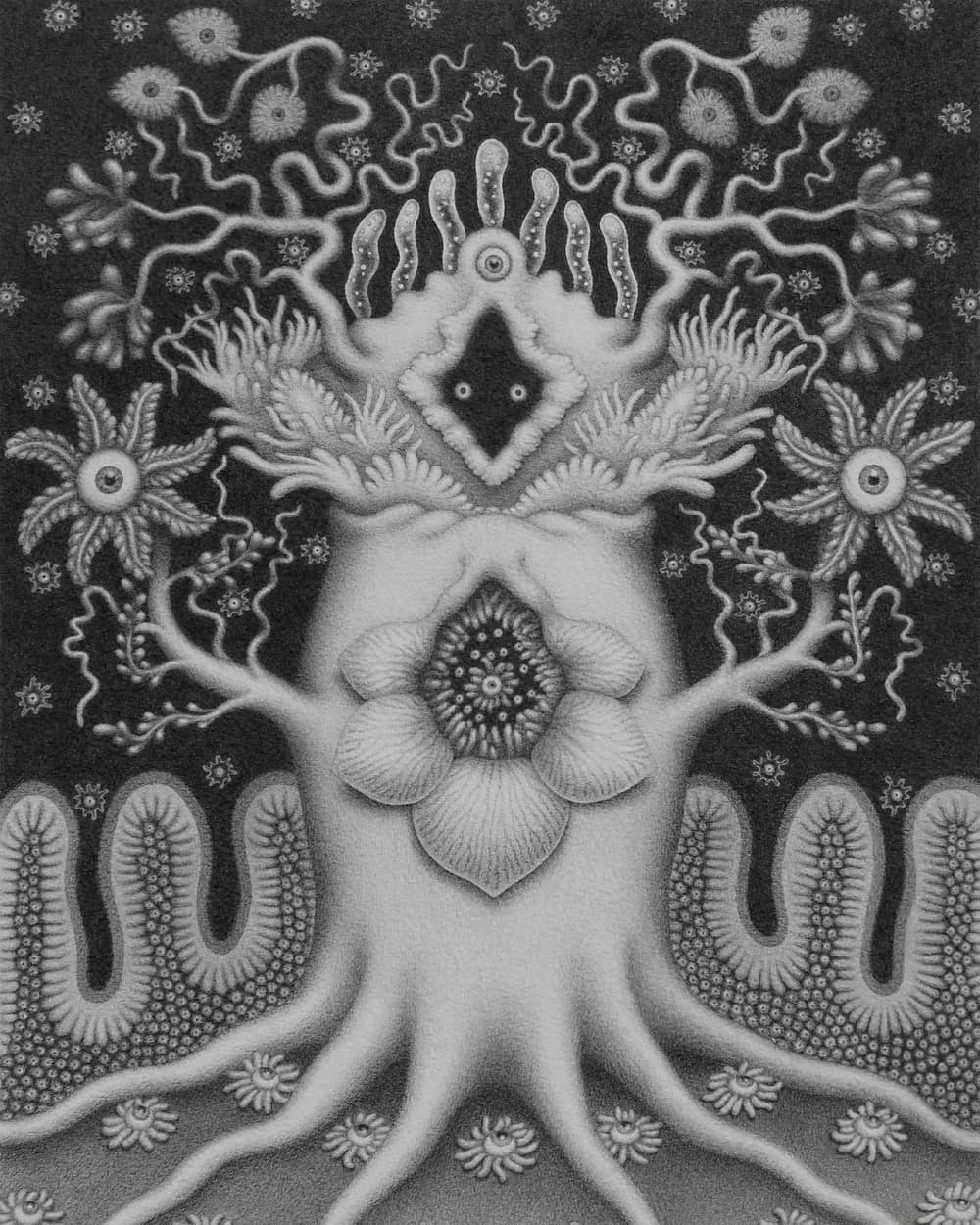Primero Estaba el Mar
2012 - Installation (Installation)
Felipe Arturo
Primero estaba el mar ( First Was the Sea , 2012) is a system of equivalences between syllables and silhouettes of waveforms cast in cement. Each waveform represents a syllable of the sentence “Primero estaba el mar.” This sentence is the first verse of the Kogui poem of creation. For the Koguis, an indigenous community from the Sierra Nevada de Santa Marta on the Colombian Caribbean coast, water was the absolute presence before the creation of the universe. The Colombian writer Tomás González used this phrase as the title of his first novel, in which he narrates the story of a couple in Medellín who, following the anarchic and hippie trends of the 1970s, abandon civilization and move to a solitary beach. Instead of leaving modernity behind, however, the couple becomes a colonizing force, transforming the natural environment of the beach into a rationalized territory. Under the logic proposed by Primero estaba el mar, the variation of the order of the waveforms represents different possibilities for this sentence. The work produces eight different phrases that assimilate the idea of repetition and change; the sentence has eight syllables, and each syllable-waveform is repeated eight times in order to reconstruct the title eight different times, resulting in a total of sixty-four pieces.
Felipe Arturo considers elements from urbanism, architecture, and art in relation to politics, history, geography, and economy. His works and projects often manifest as sculptures, installations, or videos, departing from concepts such as structure, sequence, and matter. They are deeply influenced by vernacular architecture and construction techniques, and reflect processes of assimilation and resistance to colonial and postcolonial processes. He frequently combines the language and materials of Modernism (e.g., concrete) with the informal methods of autoconstrucción (self-construction).
Colors:
Related works sharing similar palette

© » KADIST
Gan Chin Lee
2019In Studies of Chinese New Villages II Gan Chin Lee’s realism appears in the format of a fieldwork notebook; capturing present-day surroundings while unpacking their historical memory...

© » KADIST
Yuki Kimura
2012Kastura (2012) is an installation consisting of 24 black-and-white photographs of the Katsura Imperial Villa in Kyoto bequeathed by Kimura’s grandfather; free-standing structures on which they are hung; and ornamental plants...

© » KADIST
Leelee Chan
2019Blindfold Receptor (caterpillar-yellow) by Leelee Chan is inspired by the camouflaging nature of the peppered-moth caterpillar...

© » KADIST
Gan Chin Lee
In Studies of Chinese New Villages II Gan Chin Lee’s realism appears in the format of a fieldwork notebook; capturing present-day surroundings while unpacking their historical memory...

© » KADIST
Fabiola Torres-Alzaga
2013Fabiola Torres-Alzaga plays with magic, illusion, and sleight-of-hand, fabricating installations, drawings, and films that toy with our perceptions...

© » KADIST
Birender Kumar Yadav
2016Birender Kumar Yadav comes from Dhanbad, India, a city built on its proximity of iron ore and coal and once forested and inhabited by Indigenous people who compose the Gondwana...

© » KADIST
Natasha Wheat
2011Wheat’s work is built on a strong conceptual framework that weaves together commentary on social and political issues and the radical potential for change...

© » KADIST
Gan Chin Lee
2019In Studies of Chinese New Villages II Gan Chin Lee’s realism appears in the format of a fieldwork notebook; capturing present-day surroundings while unpacking their historical memory...

© » KADIST
Zach Reini
2015Particularly shaped by his own youth in the 1990s, his recent works have incorporated things like a marijuana leaf, a dragon-emblazoned chain wallet, metal grommets, and the ubiquitous (in the 90s) Stussy symbol...

© » KADIST
Colter Jacobsen
2007Victory at Sea is a simple mechanism made from cardboard and found materials that mimics the Phenakistoscope, an early cinematic apparatus...

© » KADIST
Nicolás Paris
2012Nicolas Paris studied architecture and worked as an elementary school teacher before he decided to become an artist...

© » KADIST
Allora & Calzadilla
This installation combines the display of real objects with the deceptively painterly amalgamation of their content as the subject of a photograph...

© » KADIST
Gan Chin Lee
2019In Studies of Chinese New Villages II Gan Chin Lee’s realism appears in the format of a fieldwork notebook; capturing present-day surroundings while unpacking their historical memory...

© » ARTS EQUATOR
In a Material World: IMPART Collectors’ Show 2020 & Justice for All | ArtsEquator Thinking and Talking about Arts and Culture in Southeast Asia ArtsEquator Viewpoints Courtesy of artists January 3, 2020 By Aditi Shivaramakrishnan (1,200 words, 5-minute read) When it comes to analysing an artwork, the artist’s choice of materials can be as revelatory as other elements in suggesting what they might wish to communicate...

© » KADIST
Karl Haendel
2011Haendel’s series Knights (2011) is a set of impeccably drafted, nine-foot-tall pencil drawings depicting full suits of armor...

© » KADIST
Oren Pinhassi
2020Oren Pinhassi’s work examines the relationship between the human figure and the built environment...




